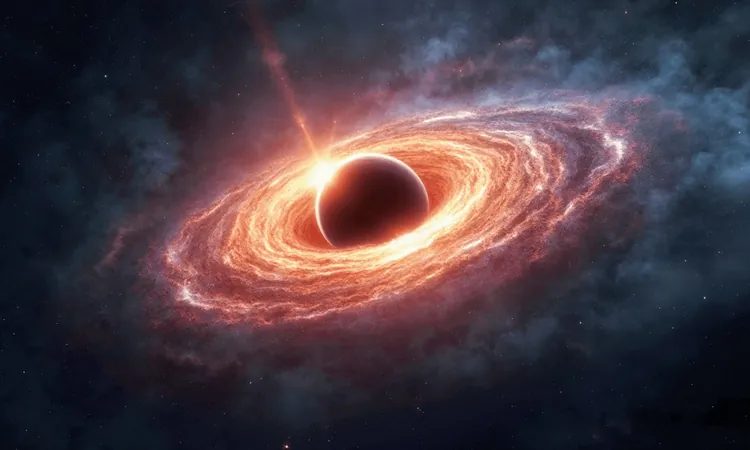
Could Dark Matter Transform Planets into Mini Black Holes?
2025-08-23
Author: Wei
The Cosmic Game-Changer: Dark Matter and Exoplanets
Once considered mere curiosities, exoplanets are now at the forefront of astronomical research, shedding light on the universe’s mysteries. Recent groundbreaking research suggests that certain gas giants might gather dark matter in their cores until they collapse, potentially forming tiny black holes.
A New Perspective on Planetary Formation
Led by graduate researcher Mehrdad Phoroutan-Mehr from the University of California, Riverside, this study emphasizes the significance of gas giants, which are ideal due to their massive volumes and cooler interiors. With nearly 6,000 confirmed planets listed in NASA's exoplanet archive by mid-2025, the research team aimed to model how heavy, non-annihilating dark matter behaves within a planet akin to Jupiter.
The Intriguing Mechanics of Dark Matter Accumulation
As dark matter particles drift into a gas giant, they gradually decelerate and move towards the planet's core. Once they accumulate to a critical mass, gravity takes over, triggering a collapse into a black hole. This phenomenon could pave the way for a gas giant to silently become a black hole while retaining its mass but losing its physical structure.
Detecting Planetary Black Holes: What to Look For
A transformed black hole would still exert gravitational influence on its star, evident through radial-velocity and astrometric signals. However, transit dips might vanish as the body shrinks beyond detectable boundaries. If stellar wobbles indicate a large planet while photometric data shows no transits, these discrepancies deserve further investigation.
Microlensing: A Different Angle of Exploration
Using microlensing techniques, astronomers can distinguish between compact black holes and gas giants of similar mass based on gravitational light-bending effects. Observational data revealing numerous high-mass objects lacking transits yet displaying dynamic signals could suggest these are indeed planetary-mass black holes.
The Role of Advanced Telescopes in Unraveling Dark Matter
The Nancy Grace Roman Space Telescope's Galactic Bulge Time-Domain survey is set to capture thousands of microlensing events in areas rich in dark matter. This mission aims to identify and map potential planetary-mass black holes, strengthening the hypothesis if clusters are found within high dark matter density regions.
A Multi-Faceted Approach is Key
Notably, this theory doesn't imply that all gas giants are on the verge of collapse. Many variables, including particle mass, local dark matter density, and interaction specifics, must align. Conversely, if no planet-mass black holes are found in expected regions, it could refine our understanding of dark matter properties.
The Big Picture: Implications for Dark Matter Research
This research has the potential to transform ordinary planetary surveys into significant particle-physics experiments. A confirmed planet-mass black hole could point to a new heavy particle candidate, pushing the boundaries of dark matter research beyond traditional terrestrial detectors. Even a lack of findings can provide valuable insights into the conditions required for such collapses.
A New Era in Exoplanet Studies
As we expand our exoplanet catalogs, the findings from the study published in Physical Review D will prompt new cross-checks and investigations, paving the way for a deeper understanding of dark matter as upcoming missions launch.



 Brasil (PT)
Brasil (PT)
 Canada (EN)
Canada (EN)
 Chile (ES)
Chile (ES)
 Česko (CS)
Česko (CS)
 대한민국 (KO)
대한민국 (KO)
 España (ES)
España (ES)
 France (FR)
France (FR)
 Hong Kong (EN)
Hong Kong (EN)
 Italia (IT)
Italia (IT)
 日本 (JA)
日本 (JA)
 Magyarország (HU)
Magyarország (HU)
 Norge (NO)
Norge (NO)
 Polska (PL)
Polska (PL)
 Schweiz (DE)
Schweiz (DE)
 Singapore (EN)
Singapore (EN)
 Sverige (SV)
Sverige (SV)
 Suomi (FI)
Suomi (FI)
 Türkiye (TR)
Türkiye (TR)
 الإمارات العربية المتحدة (AR)
الإمارات العربية المتحدة (AR)